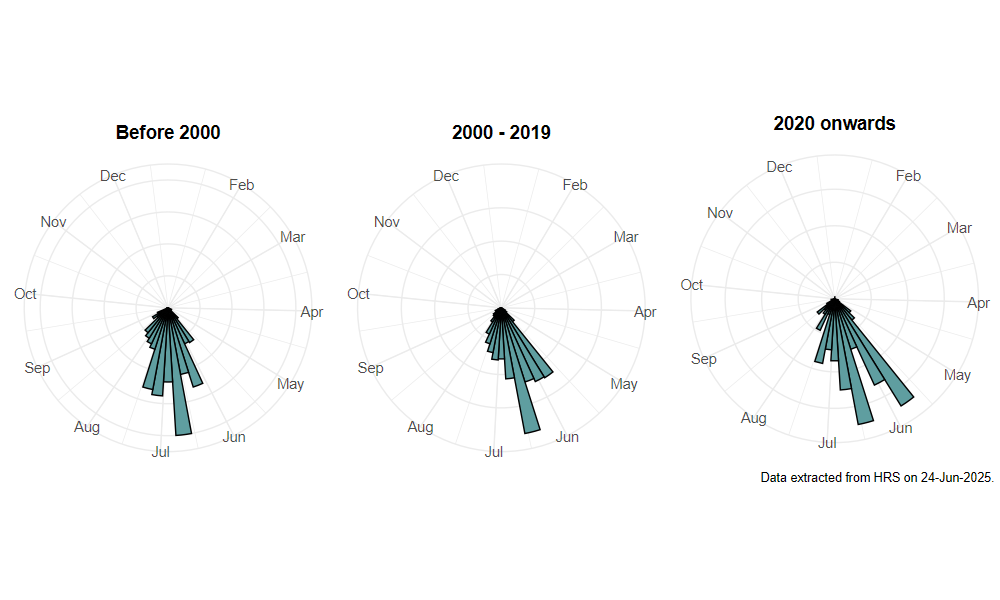Xylota jakutorum Bagachanova, 1980
Identification
Identification difficulty = 2. ![]()
![]() according to Ball & Morris, 20241
according to Ball & Morris, 20241
Synonymy
Xylota coeruleiventris Zetterstedt, 1838 in Stubbs & Falk (1983)2.
Biology
The larva is found in sap-filled tunnels of the bark weevil Hylobius abietis (Rotheray & Stuke, 1998)3. It is associated with conifer plantations, and unlike most members of the genus, can frequently be found visiting flowers, especially buttercups Ranunculus sp., in open spaces such as rides, fire-breaks and way-leaves. It is particularly abundant in areas felled 2-3 years previously, after which time the stumps become suitable for the weevil larvae.
Flight period
The following plots show the number of unique records per week excluding those reported to be of immature stages.

Status
Was listed as 'Notable' by Falk, 19914, but dropped from this status by Ball & Morris, 20145 who consider it LOWER RISK.
Distribution
Although there are museum specimens from Caledonian pine forest in the Highlands of Scotland going back to the end of the 19th Century, recent records extend throughout northern and western Britain. It seems to have spread southwards into conifer plantations. It is now well-established in south-west England as far east as Hampshire, with outlying records from scattered locations as far east as the Norfolk Brecklands. Further consolidation of populations can be expected in major conifer plantations in southern and eastern England.

Trends
The following plots show the Frescalo TFactor vs year and a map of the rescaled frequency (all records) for the species.
-
Ball, S., & Morris, R. (2024). Hoverflies of Britain and Ireland. WILDGuides (3rd ed.). Oxford: Princeton University Press. ↩
-
Stubbs, A., & Falk, S. (1983). British Hoverflies: An Illustrated Identification Guide (1st ed.). Reading: BENHS. ↩
-
Rotheray, G., & Stuke, J. (1998). Third stage larvae of four species of saproxylic Syrphidae (Diptera), with a key to the larvae of British Criorhina species. Entomologist’s Gazette, 49, 209–217. ↩
-
Falk, S. (1991). A review of the scarce and threatened flies of Great Britain. ( No. 39). Research and Survey in Nature Conservation (pp. 1–194). Peterborough: NCC. ↩
-
Ball, S., & Morris, R. (2014). A review of the scarce and threatened flies of Great Britain. Part 6: Syrphidae. ( No. 9). Species status (pp. 1–130). Peterborough: JNCC. ↩